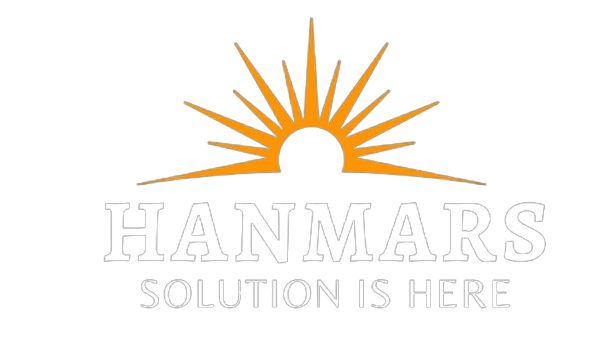Streamlining Firewall Management: The Power of Unified Platforms and Expert Integration
In today’s data-driven business landscape, enterprises are faced with the challenge of effectively managing and leveraging information from a multitude of sources. As the volume and complexity of data continue to grow exponentially, organizations must address the critical issue of data silos, where information remains trapped in isolated systems, hindering its potential for strategic value and business insights. In today’ s rapidly evolving cybersecurity landscape, organizations face an increasingly complex challenge: managing a diverse array of firewall solutions from multiple vendors. As cyber threats grow in sophistication and frequency, companies have adopted a variety of firewall technologies to fortify their digital defenses. However, this multivendor approach, while offering robust protection, has introduced a new set of challenges that threaten to undermine the very security it aims to enhance.

The Multivendor Firewall Dilemma
The adoption of firewalls from different vendors is often a strategic decision, driven by the need to leverage best-of-breed solutions for specific security requirements. Organizations might deploy traditional firewalls alongside next-generation firewalls (NGFWs) and cloud security controls, each chosen for its unique strengths. However, this diversity comes at a
cost.
Integration challenges pose a significant hurdle, as different vendors use proprietary protocols and management interfaces, making seamless integration a Herculean task. Operational complexity also increases as networks expand, making it increasingly difficult to keep track of numerous components, configurations, and protocols.
Security policy fragmentation is another concern, as integrating diverse security policies across different platforms can create gaps in security coverage. Performance management becomes more challenging, with the collection and analysis of performance data from multiple sources, each with unique object identifiers (OIDs), complicating monitoring and
troubleshooting efforts.
Vendor management overhead adds another layer of complexity. Dealing with multiple vendors, each with their own support processes and SLAs, can delay issue resolution and complicate maintenance procedures. These challenges not only increase operational overhead but also introduce potential security vulnerabilities. The fragmented nature of multivendor environments can lead to configuration errors, policy inconsistencies, and delayed threat response times – all of which can be exploited by cybercriminals.
The Rise of Unified Management Platforms
In response to these challenges, the cybersecurity industry has witnessed the emergence of unified management platforms for multivendor firewalls. These platforms offer a centralized approach to simplify and automate firewall management across heterogeneous environments. Key advantages include:
- Centralized Control and Visibility: A single pane of glass for monitoring and managing all firewall devices, regardless of vendor.
- Enhanced Security Posture: Consistent security policies across the entire network, minimizing configuration errors and security gaps.
- Simplified Compliance and Reporting: Comprehensive, integrated reporting capabilities that streamline compliance efforts and simplify audits.
- Operational Efficiency: Automation of routine tasks, reducing operational burdens and allowing IT staff to focus on strategic initiatives.
- Improved Incident Response: Real-time visibility and centralized control enable faster threat identification and mitigation across the network.
The Growing Role of System Integrators
As organizations grapple with the complexities of multivendor firewall management and the implementation of unified platforms, system integrators are emerging as crucial partners in this journey. Their role extends far beyond mere technology implementation:
- Vendor-Agnostic Expertise: System integrators bring extensive experience in managing multivendor environments, ensuring seamless integration of all firewall devices into the unified management platform.
- Customized Solutions: They work closely with clients to understand specific security requirements and design tailored solutions that align with organizational objectives and workflows.
- Seamless Integration and Deployment: System integrators manage the entire integration process, from planning and configuration to testing and deployment, ensuring a smooth implementation.
- Continuous Monitoring and Support: Providing ongoing monitoring and support, system integrators help organizations maintain a strong security posture over time.
- Training and Knowledge Transfer: Comprehensive training empowers in-house IT staff to effectively manage and optimize the unified platform.
- Optimization and Tuning: System integrators can help organizations optimize firewall configurations, eliminate redundant rules, and ensure optimal performance and security.
The value proposition of system integrators in this context is clear. They bridge the gap between the complex, multivendor reality of most organization’s firewall infrastructures and the streamlined, efficient ideal offered by unified management platforms.
Looking Ahead: Trends and Future Directions
As we look to the future of firewall management, several trends are emerging:
- AI and Machine Learning Integration: Unified management platforms are increasingly incorporating AI and machine learning capabilities to enhance threat detection, automate policy optimization, and predict potential security risks.
- Cloud-Native Security Integration: As more organizations adopt cloud and hybrid infrastructures, unified management platforms are evolving to seamlessly integrate cloud-native security controls alongside traditional firewall management.
- Zero Trust Architecture Alignment: Unified management platforms are being designed to support and facilitate the implementation of Zero Trust security models across diverse firewall infrastructures.
- Automated Compliance Management: Advanced platforms are offering more sophisticated compliance management features, automating the process of policy creation, enforcement, and reporting to meet various regulatory requirements.
- Enhanced Visualization and Analytics: Improved data visualization and analytics capabilities are helping organizations gain deeper insights into their security posture and network performance across multivendor environments.
Conclusion
The challenges of managing multivendor firewall environments are significant, but they are not insurmountable. Unified management platforms offer a powerful solution, providing centralized control, enhanced security, and operational efficiencies. However, the successful
implementation and optimization of these platforms often require the expertise and support of system integrators.
As cyber threats continue to evolve and network architectures become more complex, the partnership between organizations, unified management platforms, and system integrators will become increasingly crucial. This collaborative approach not only addresses the immediate challenges of multivendor firewall management but also positions organizations to adapt more readily to future security needs and technological advancements.
In this ever-changing landscape, one thing is clear: the future of effective firewall management lies in unification, automation, and expert guidance. Organizations that embrace this approach will be better equipped to navigate the complexities of modern cybersecurity, ensuring robust protection for their digital assets in an increasingly hostile digital world.

